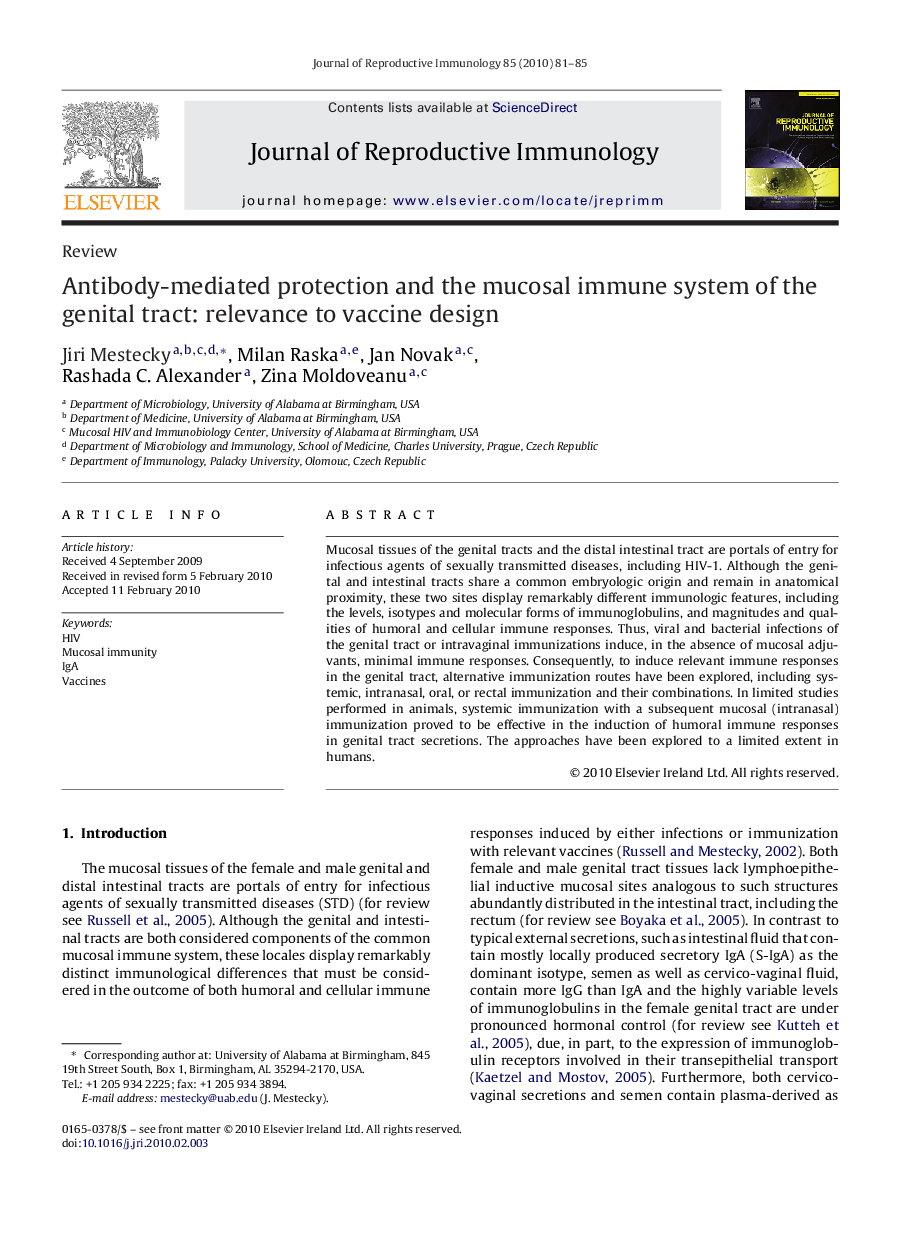| Article ID | Journal | Published Year | Pages | File Type |
|---|---|---|---|---|
| 3965940 | Journal of Reproductive Immunology | 2010 | 5 Pages |
Mucosal tissues of the genital tracts and the distal intestinal tract are portals of entry for infectious agents of sexually transmitted diseases, including HIV-1. Although the genital and intestinal tracts share a common embryologic origin and remain in anatomical proximity, these two sites display remarkably different immunologic features, including the levels, isotypes and molecular forms of immunoglobulins, and magnitudes and qualities of humoral and cellular immune responses. Thus, viral and bacterial infections of the genital tract or intravaginal immunizations induce, in the absence of mucosal adjuvants, minimal immune responses. Consequently, to induce relevant immune responses in the genital tract, alternative immunization routes have been explored, including systemic, intranasal, oral, or rectal immunization and their combinations. In limited studies performed in animals, systemic immunization with a subsequent mucosal (intranasal) immunization proved to be effective in the induction of humoral immune responses in genital tract secretions. The approaches have been explored to a limited extent in humans.
